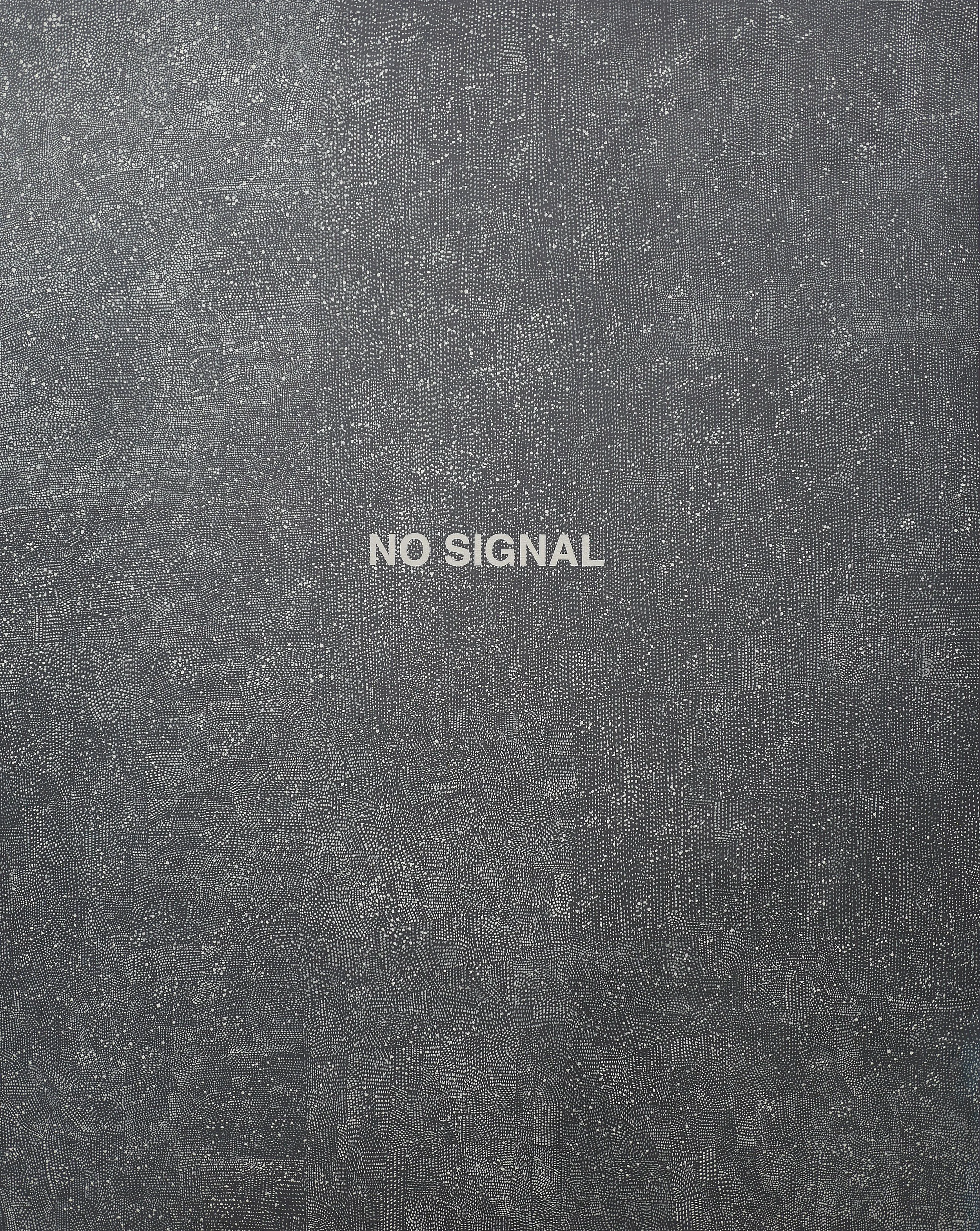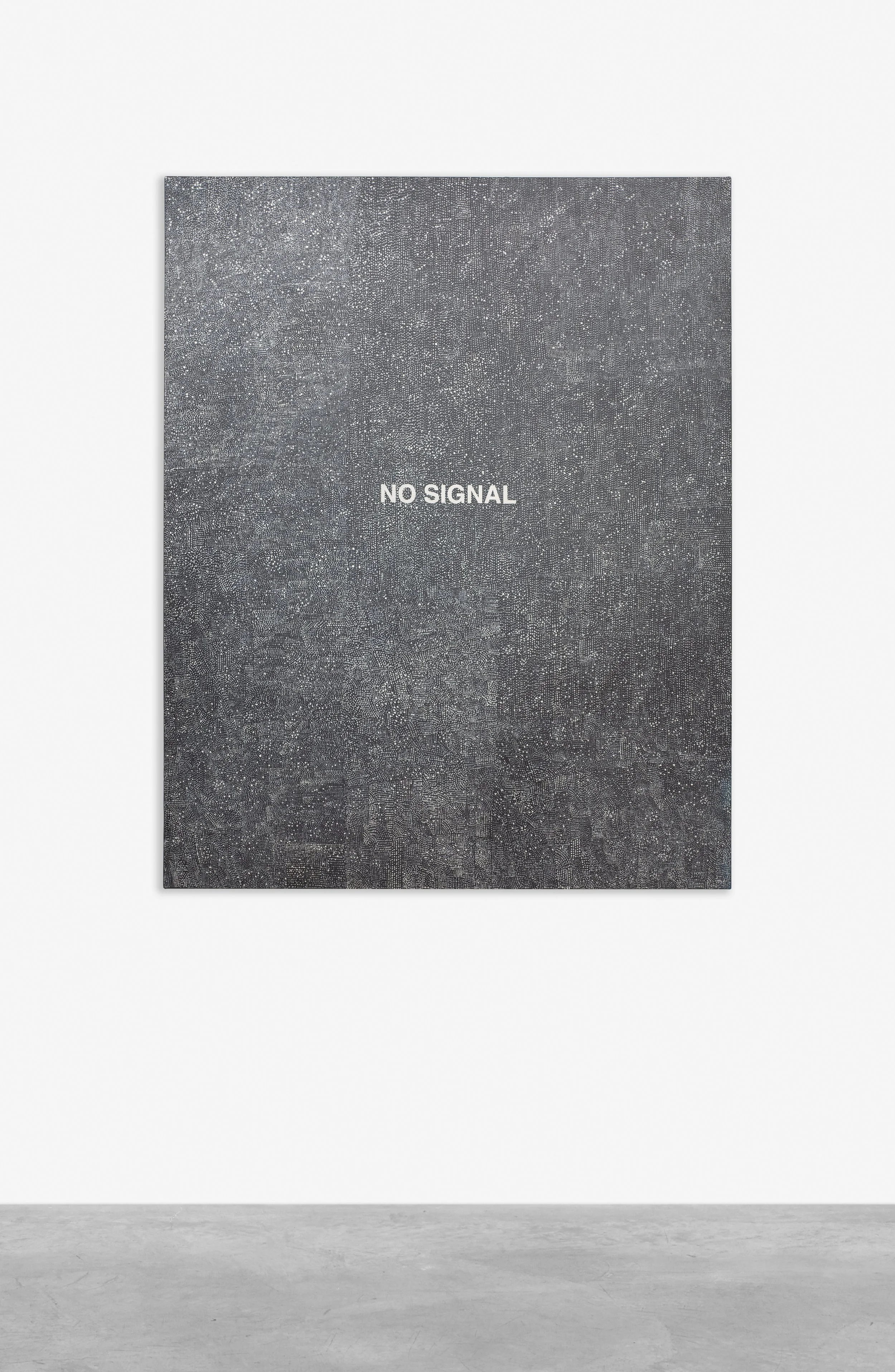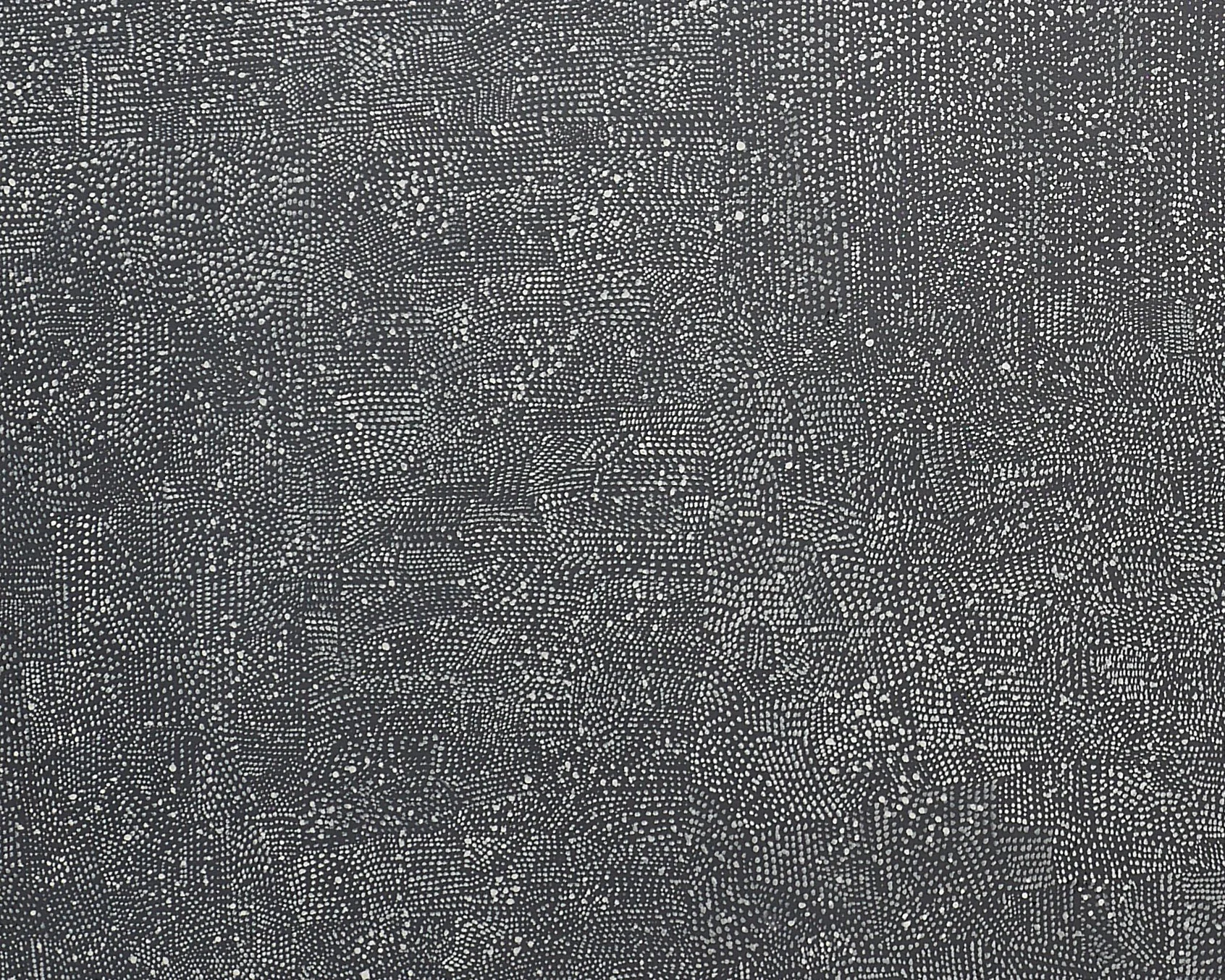NO SIGNAL, 2019
NO SIGNAL, 2019
Oil, acrylic medium on canvas
152 x 122 cm (60 x 48 in)
NO SIGNAL (2019) explores the intersection of cosmic phenomena and modern technology through the enigmatic nature of TV white noise. Tan Mu captures the random, snowflake-like patterns that appear when a television loses its signal—a visual metaphor for the universe’s origins. Often dismissed as mere interference, this static contains cosmic microwave background radiation, an ancient echo of the Big Bang that occurred approximately 13.8 billion years ago. As a remnant of the universe’s birth, it connects us to the distant past, symbolizing the continuous expansion of energy from that primordial explosion. This artwork invites viewers to contemplate the vastness of time and space, linking cosmic history with everyday technological experiences. In an era where digital clarity has replaced analog static, NO SIGNAL evokes nostalgia for a time when lost transmissions revealed hidden traces of the cosmos. It reminds us that even the most mundane glitches can unveil profound connections to the universe, underscoring humanity’s relentless pursuit of understanding the cosmos and our place within it.
Signal, May 5 – June 10, 2022, Peres Projects, Milan
Signal, May 5 – June 10, 2022, Peres Projects, Milan
Signal, May 5 – June 10, 2022, Peres Projects, Milan
Q: NO SIGNAL (2019) depicts a scene of TV signal failure. Is this disconnection of signals related to your personal experience?
Tan Mu: In addition to exploring signal disconnection in the information age, this work also reflects my personal state at the time, when I was experiencing a disconnection in memory. As a freediving enthusiast, I suffered a diving accident that temporarily caused me to lose parts of my memory. This experience forced me to delve deeper into the complex relationship between memory and self, and it allowed me to find new ways of understanding and creating through the fragmentation of emotion and memory. It also heightened my awareness of how information and technology influence human experience. Whether it is memory loss or the flow of information, both reflect how we shape and alter our cognition and existence through technology. NO SIGNAL symbolizes a state of mental emptiness, with over 130,000 dots on the canvas representing the blank space in my mind caused by the shutting down of memory. These dots are not just a visual representation but also my attempt to capture the state of memory disconnection and explore how to find new meaning and creativity within the emptiness.
Q: How do you connect signal transmission and memory disconnection in your work?
Tan Mu: NO SIGNAL shares a thematic connection with my other works from the same period, such as LOADING… and Off. They all depict a state where emotional connections, memory, and signals are disconnected, especially Off, which portrays my state of "shut down." I draw a parallel between human memory and machine signals. Whether it’s the neurons in the brain transmitting information or the logic circuits in devices processing signals, both systems use an "on and off" switch mechanism to determine the flow of information, and both are susceptible to malfunctions and errors. This perspective resonates with the concept of humans as machines—highly complex, intricate machines. We share similar software (consciousness and collective memory) and hardware (the body). This relationship between humans and machines is a theme I continuously explore.
Q: You mentioned there are over 130,000 dots on the canvas. Could you discuss the process of creating these dots and their symbolic significance?
Tan Mu: These dots were created in 2019, and I spent about a week carefully placing each one on the canvas, totaling approximately 130,000. The dots symbolize signals, pixels, information, white noise, and snowflakes. They not only represent the blank state of my mind at the time but also reflect the fragmentation and flow of information in the digital age. During the creation process, I experienced a nearly meditative state, with each dot responding to the loss of memory. The arrangement and spacing of the dots were carefully calculated to create a sense of order, while also hinting at the transmission and reception of information in the digital world.
Q: How does white noise symbolize the intersection of technology and the universe?
Tan Mu: White noise, particularly the static we see on a screen when there is no signal, has a profound connection to both technology and the universe. A portion of this static actually originates from cosmic microwave background radiation—the afterglow of the Big Bang. Around 13.7 billion years ago, the Big Bang produced intensely hot X-rays, which, as the universe expanded and cooled, gradually shifted into microwaves and radio waves that continue to propagate through space. With the advent of satellite communication systems on Earth, television antennas became capable of picking up traces of this microwave radiation, which appear as static on a screen. Although cosmic microwave background radiation accounts for only a tiny fraction (about 1%) of the static noise, it serves as an echo of the universe’s birth—almost as if we are glimpsing the origins of the cosmos through a television screen. However, the majority of static noise comes from terrestrial electromagnetic interference and the imperfections of television hardware, such as antenna fluctuations, amplifier distortion, and circuit noise. Yet, despite its origins in technological imperfection, this white noise fascinates me, as it embodies both the failure of technology and the entanglement between human-made systems and the vastness of the universe. Static noise acts as a kind of portal, an accidental link connecting us to the past of the cosmos. It reminds us that while modern technology has become increasingly adept at filtering out interference, the mysteries of the universe still linger within these seemingly chaotic signals. Through NO SIGNAL, I aim to capture this intersection of technology and the cosmos, prompting viewers to reflect on information transmission, space exploration, and humanity’s place in the universe. Static noise is not just a visual phenomenon—it is a metaphor for our relentless pursuit of the unknown.
Q: How do you view the connection between this work and your other pieces?
Tan Mu: In addition to LOADING… and Off, NO SIGNAL is also intrinsically connected to the Signal series. In the Signal series, I also use a large number of dots to represent data packets transmitted through submarine cables. These dots not only reflect the data nodes and flow in the digital age but also symbolize the collective effort of human labor and the interconnectedness of global collaboration. While the dots in NO SIGNAL represent a state of mental emptiness and information loss, serving as a metaphor for memory disconnection, they also reflect a profound reflection on human experience in the information age. On the other hand, the dots in the Signal series symbolize the flow and connection of information. Both series emphasize the importance of information in the digital world. This transition from loss to connection reflects my ongoing exploration of connection and disconnection.





